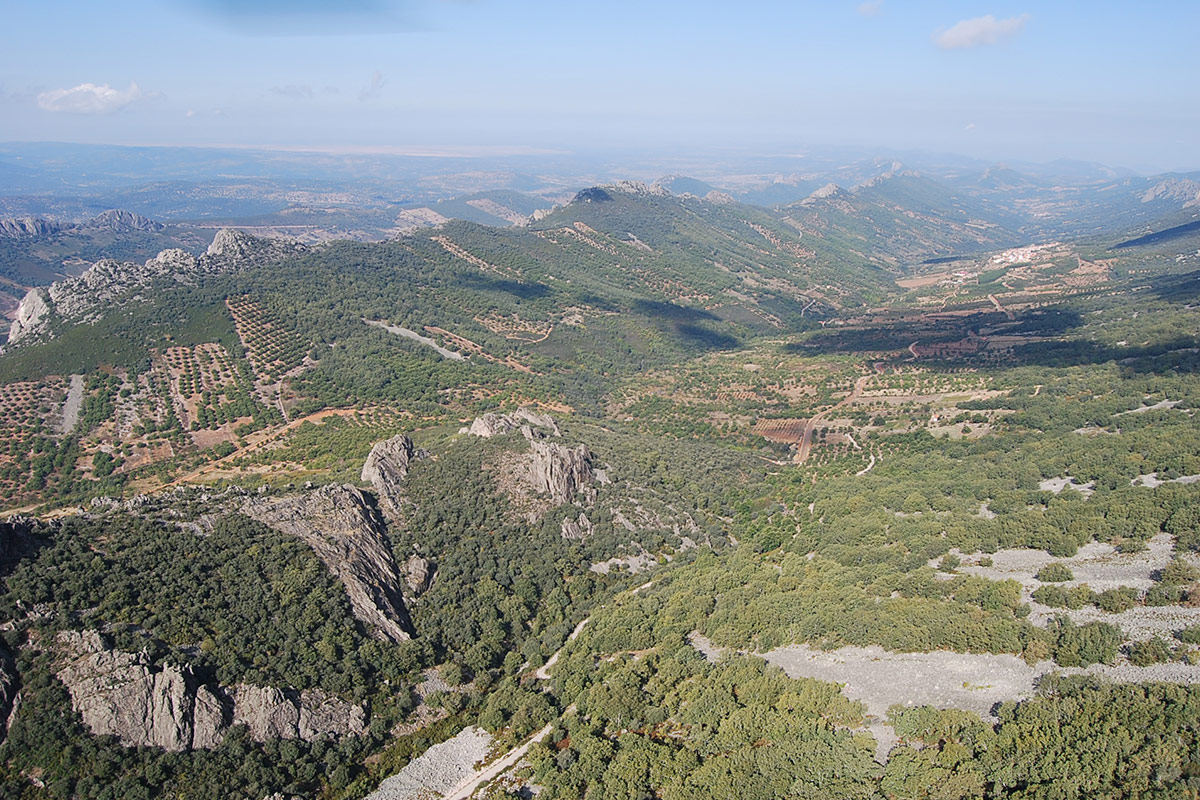LOCATION AND ACCESS
The River Almonte anticline extends from the basin of the Tajo, which is its northern limit, to the northern base of the crag of La Villuerca, its southern limit. Through its core and over part of its long route the River Almonte flows from its source at La Villuerca until it abandons it towards the Santa Lucía syncline in search of the Apreturas del Almonte. The CV-121 road, which is one of the main access routes, continues virtually parallel to the watercourse through the villages of Roturas and Navezuelas, but this long anticline can also be reached by the road running from Deleitosa to Robledollano and Castañar de Ibor.
ATTRACTIONS OF THE VISIT
A route can be followed that illustrates the different branches of earth sciences, together with other aspects such as ornithology, botany, ethnography, or archaeology. As far as geology is concerned the geomorphology is outstanding with imposing valleys and parallel sierras worn down by erosion that are characteristic of residual Appalachian relief, and fine examples of surface hillside formations: pedreras, ejectamenta cones, colluviums, hanging terraces, etc.
Stratigraphically it contains a varied sedimentary and paleontological succession with magnificent examples of trace fossils, together with the oldest fossil algae filaments to have been found in the Iberian Peninsula.
The different tectonic structures present in the area are good examples of various types of deformation, both brittle and ductile, which have affected these materials in the form of faults, diaclases, disconformities, and various types of folds. Hydrogeology should not be neglected as there are numerous fountains and surges related to various types of lithology; for example, the source of the River Almonte in the fast-flowing surge located on the lower part of a huge pedrera that acts as a recharge zone for precipitation.
GEOLOGICAL INTERPRETATION

